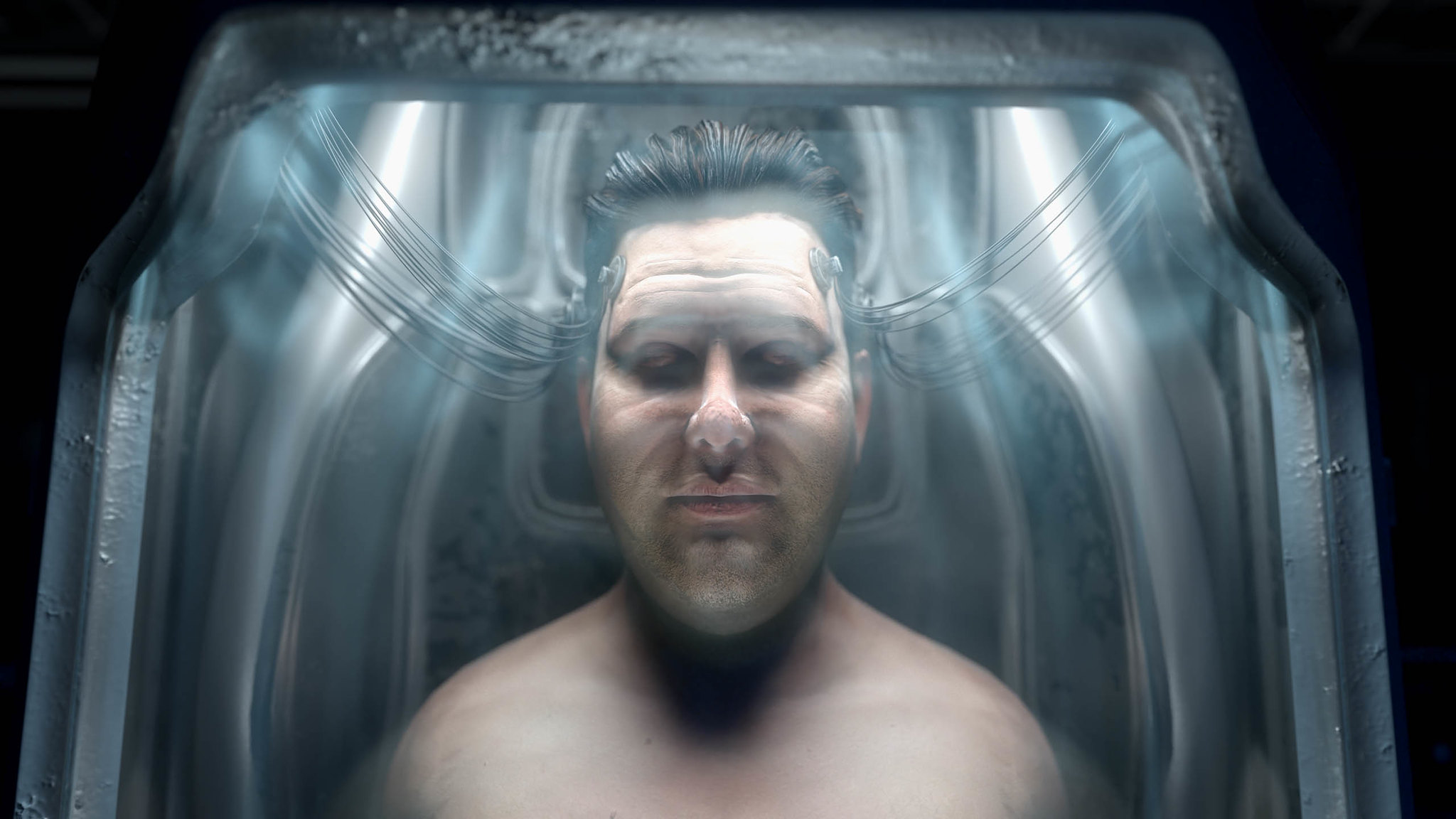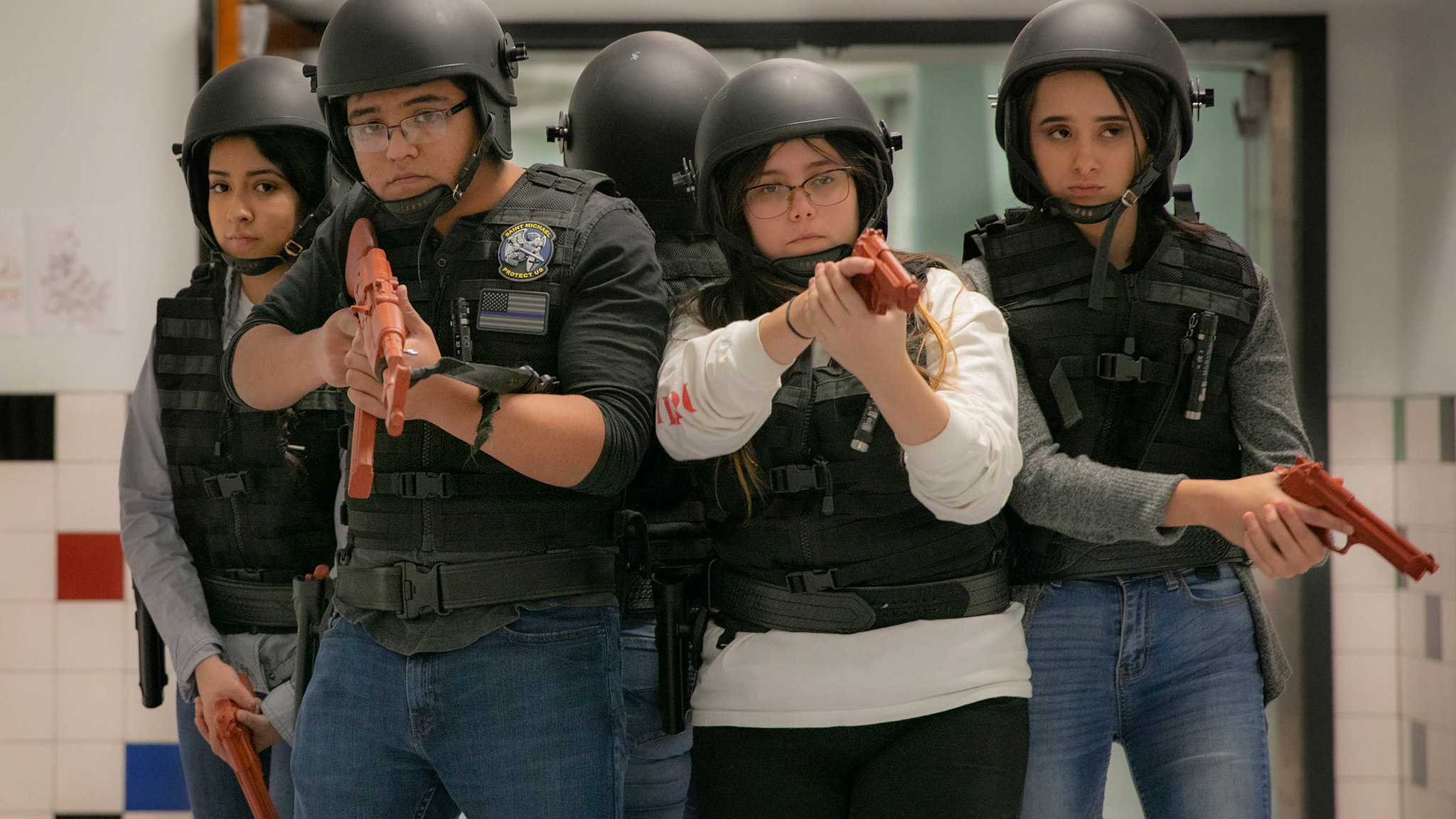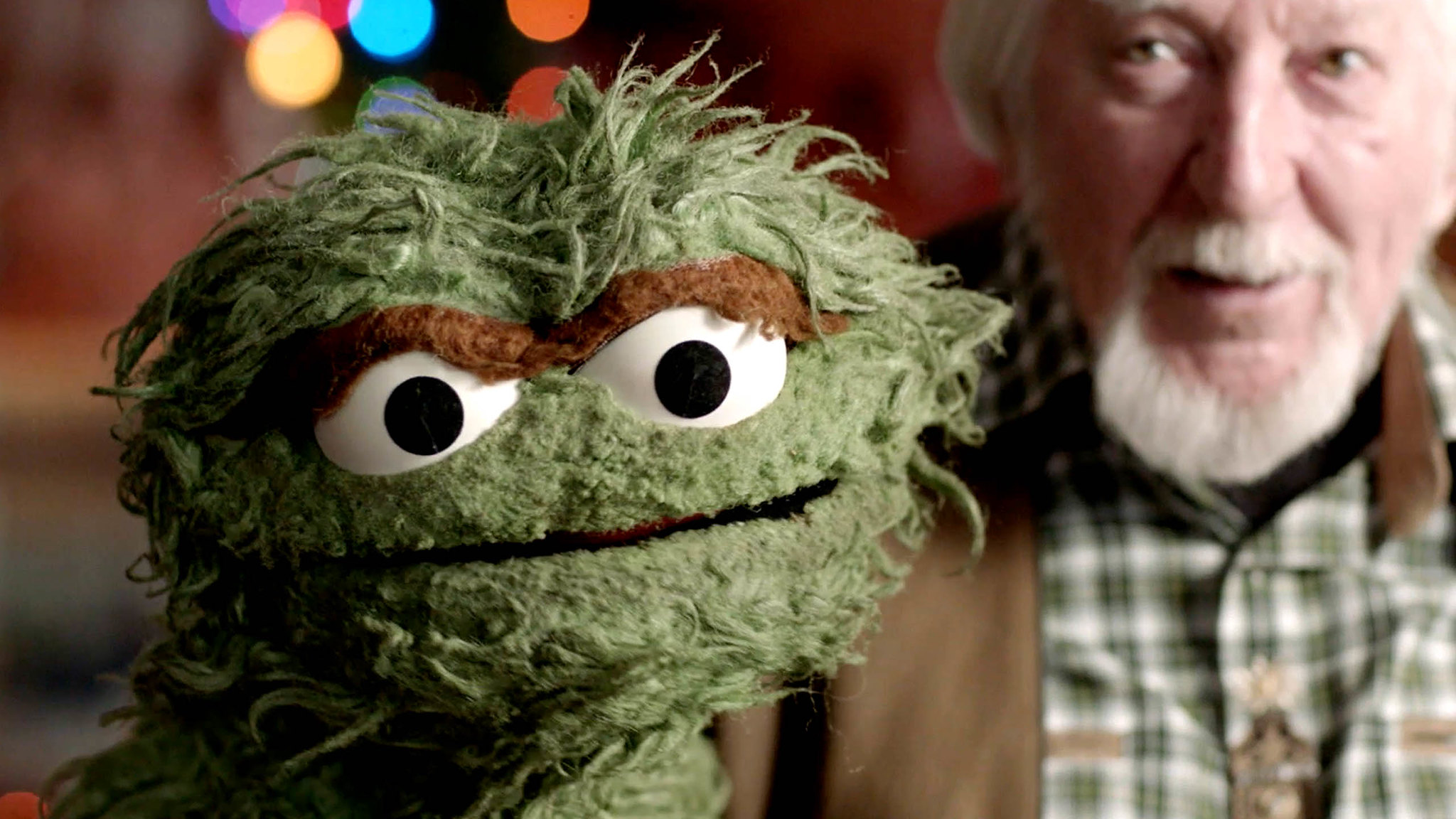Rodney Ascher, best known for his look at Shining obsessives in Room 237, returns with another round of cinematic and philosophical indulgences in A Glitch in the Matrix. Focusing primarily on so-called “simulation theory” – a contemporary extension of Cartesian epistemological doubt where we can’t prove that we’re not living inside a computer program – Ascher intertwines interviews with philosophers and fan boys. Key participants have a computer-generated avatar in place of their physical presence on screen.
The film is highly cerebral while also being cinematic. Ascher delves into these esoteric ideas while maintaining coherence and providing an engaging narrative. While certainly a slow build, the result is another fabulous rumination upon deeper philosophical ideas. It’s also a provocative consideration of how pulp culture, gaming culture, and the works of Philip K. Dick lead people down philosophical enquiries that at best are intellectually confounding, and at worst can be a sordid excuse for psychopathic barbarity.
POV spoke to Rodney Ascher prior to A Glitch In the Matrix’s virtual premiere at Sundance.
POV: Jason Gorber
RA: Rodney Ascher
This interview has been edited for brevity and clarity.
POV: We’re having this conversation on a Zoom call in the middle of a pandemic. What better way to deal with our virtualized worlds than what we’re living! When you started the film, where were we at in the pandemic?
RA: I started thinking about it a couple of years ago and we started doing our interviews near the beginning of 2019. What we would do in the film are heightened Zoom / Skype calls with the avatars in real world spaces that play as satire. The conversation we’re having right now in the same way is a complete coincidence, but complete coincidences have a way of accumulating around these projects.
POV: Your first doc, Room 237, did a couple of remarkable things. First, it shows the exegetical exercise, encouraging audiences about how to view films, which is basically what I try to do for a living. Equally, it was a look at the obsession of looking, of going down rabbit holes and deciding that your analysis trumps the quotidian things that are right in front of you. Other than obvious connections to these themes, what drew you to the story of The Matrix? Did it begin with the tragedy that’s documented at the end of your film, or was it a little bit more subtle than that?
RA: No, that final story was something we discovered in the course of making it. It started with wanting to look at simulation theory, well before looking at The Matrix itself. Back in 2016-2018 simulation theory was starting to become a subject that people were taking seriously scientifically. There were articles about it in The Guardian and the New York Times, and The New Yorker had a long article about a video game, No Man’s Sky, that made a big impression on me. And, of course, stories about the Mandela effect. That was the jumping off point. But you can’t tell a story about simulation theory today and its effect on our culture without referencing The Matrix.
POV: What was your response to The Matrix when you first saw it in 1999?
RA: I was blown away. I was coming at it from a couple of different ways. I was already a fan of Hong Kong action cinema, so the stunt work was something that I was geared to appreciate. I was also really into music videos that the likes of Michel Gondry and H-Gun were doing—these interesting, experimental things. They were doing bullet time-like shots with huge rings of cameras, and moving in and out of still photos. I had those interests, as well as always being into comics and science fiction. I was already a fan of The Matrix’s conceptual artist, Geof Darrow, who did that amazing comic Hard Boiled with Frank Miller, so I was ready to love it and it didn’t disappoint.
POV: Regarding Philip K. Dick, was it a cinematic love, or does it go back to the novels?
RA: It started with the movies, probably with Total Recall.
POV: Not Blade Runner?
RA: I admire Blade Runner, but I love Total Recall. That’s the Verhoeven thing as much as anything. He’s an all-timer for me. It’s that combination of being playful and being mind-blowing. I’ve read a few of the novels, but I was never a hard core Philip K. Dick guy until we started developing the movie. Over the course of two years, I read as many as I could get my head around.
POV: There’s a danger in being quickly judgmental at some of the more outlandish things that take place in your film. Did you ever find yourself falling down some of these holes and having to remind yourself that some of this stuff is not so kosher?
RA: I always wanted to go as deep as I could. There are parts of me that wish it had gone deeper and stranger, but I don’t know that I ever genuinely felt a danger that I wasn’t believing in reality anymore. It might be a more entertaining story if midway through this I was thinking that I could see the code, the ones and zeroes around me! But it was always a film project. I’d get into conversations about simulation theory, like the one I’m getting into with you, that could be endless. At a certain point, they could make my head hurt, but I never felt that I was personally exposing myself to a thought that would be dangerous.
POV: As a recovering philosophy major, there’s a fine line between philosophy and psychopathy. I think that it’s easy enough for us to ruminate on the epistemological conceits of Cartesian conceits, or looking at Book VII of The Republic with the “allegory of the cave” that we can draw upon while we’re discussing simulation theory. On the other hand, you have people believing in QAnon, where a mental thought experiment becomes something very dangerous that can lead to violence.
RA: I hope that this movie can give people a vocabulary to tackle those things. Nick Bostrom uses the phrase “radical skepticism” when he talks about the brain in the vat and how ultimately, you can’t argue your way out of the idea with 100% success. Nonetheless, you still need to draw a distinction between what’s fun about poking a stick at those ideas versus the dangers you get into when you deny them. Some of the more dangerous conspiracy [theories] that folks find themselves trapped in are often about ideas that they want to believe because they confirm their prejudices, their histories, or the team that they’re rooting for. They’re not being rigorous in vetting information if that information is either convenient, or soothing, or reassuring, or helpful for them to argue their case.
POV: It’s fundamentally a picking and choosing of what you’re skeptical about. You can be radically skeptical of something like the foundation of existence, but then still firmly believe that The Matrix is talking to you.
RA: Exactly! [Laughs.]
POV: How do you create a compelling and convincing narrative out of thousands of years of philosophy and dozens of people rambling on the Internet?
RA: The verdict is still out about whether I succeed, or the opinion is split. My path through this madness was on a big white board, writing down what I saw in my own perspective as the important milestones in this idea, from going back to Plato’s cave and in a thousand other directions. But then I realized that what I wanted to focus on were the stories of a handful of people who’ve come to the belief that we’re living in a simulation and letting them talk at length about their experience, to get their human stories. I wanted to hear the stories of where they were in their lives when this idea occurred to them and what has happened since then. There are huge things that aren’t in the movie – I would have loved to have been able to talk about Borges’ On Exactitude in Science. Instead, I talk about Paul driving in his father’s car on the way to St. Louis, thinking there’s a big movie screen in front of them where the powers that be were changing the background. It’s easier to find a lot of this reference material on Wikipedia, but it’s hard to find these personal stories—that would be the “lodestone” in terms of what I can bring to the table. I then worked with an animation team to try to put the audience into their heads. I don’t have a degree in philosophy, and I’m connecting with some people who’ve been through hell and back wrestling with these beliefs.
POV: Could talk about finding your participants? And why did you decide to do the avatars?
RA: I didn’t find them, they found us. We announced that we were making this film and a put a place where people could reach us. We read their stories and reached out to person after person to talk about them. There were two big questions: Where were you in your life when you started to believe this theory? And what’s happened since then? When we recorded the interviews on Skype in 2019 and then worked to create the avatars. Now that this movie is being released into the world of 2021, maybe it makes the movie look more current than it has a right to look.
I thought it would be interesting conceptually because we’re talking about living in a perceived digital world. We could tell the story within desktop environments. The avatars were a way of talking about the collision of reality and unreality that we have in these worlds. People choose more and more often to communicate via their avatars, whether they think about the icon that they use on social media, or if they’re playing a video game where their voice comes out of a science fiction character. I’ve always loved that Warner Bros cartoon where the Coyote and the Sheepdog finish hitting and chasing each other, they clock out and make small talk in the coffee room. I thought our film might have the quality of chatting with a video game character on their day off.
POV: I assume it was done in post-production, but did you incorporate any motion cap elements from the interviewees? Or was it procedural animation done after the fact?
RA: It was motion capture. The technology has finally gotten to a place where you could afford it in an indie documentary budget. Lorenzo Fonda, an animator, put on this suit and he would watch the interviews and interpret them with his body language. That was mapped to these characters that were designed by comic artist Chris Burnham and then sculpted in 3D. It allowed us to take the characters who were telling the story themselves and put them into their own reenactments. You don’t have to squint at an actor wearing a toupee or a fake mustache who is trying to look like the guy in the conversation—it’s literally the same character and he probably fits into the environment more naturally than he does whatever arbitrary Skype window he was communicating from.
POV: Did you take a shot of the actual participant, and then put animation on top of it?
RA: No, the background is the background [used by] the real people.
POV: Right, because I was totally judging the people based on their backgrounds, which is also something we do nowadays.
RA: That’s perfectly fair. I’m trying to read the spines of the records behind you to get a sense of where you’re coming from! [Jason is speaking in front of his sizable vinyl collection.] When shooting, I had to bite my tongue because I wanted to art direct the backgrounds. Yet I wanted them to use what they were comfortable using for our perception of the character. If I asked them to rotate the camera around to pivot into an interesting corner, it would all of a sudden be this other thing. For the character who’s like a robotic Anubis wearing the tuxedo, his background is just a dark corner with a little bit of a blinking light. The animators hated that background and they were begging me to make a new one. Once they applied the same digital noise that was in the background to the character, because it was a low light situation, and simulated the blinking Christmas lights he was using for illumination, it had a magic that a really beautiful art-directed one wouldn’t have had.
POV: Is this whole film your excuse to make your own version of The Matrix?
RA: In its way. I think it’s my excuse to make a version of The Twilight Zone.
POV: I’ll ask the same thing I asked when we talked about Room 237: how does this movie change the way that you watch movies?
RA: I don’t know. Having made a couple of them now, even if they’re wildly idiosyncratic movies that don’t represent the way normal people make movies, I’m not under any illusions about the fact that they’re constructed by normal human beings and that some decisions are arbitrary. In hindsight, there are a couple of pieces of the movie that came together in a way that I really like that feels obvious, that they were choices that I had to make that were difficult. At one point, we were thinking each avatar would be created by a different artist and animated in a different style. This one will be cell animation, this one will be stop motion, and this one would be some kind of automated emoji. When we went down the path, we ended up on the avatars having a quality of video game characters. I liked that a lot, especially since the movie wound up speaking more about video games than I expected. I suppose if there’s a message I’ll take from other movies, it’s that some good choices were just dumb luck.
POV: People are often uncomfortable with things that lack intentionality. One of the reasons people look towards conspiracy theories is because they wish to have a narrative order supplanted on things that are otherwise chaotic or random. I assume you embraced the chaotic as a filmmaker. In terms of that life lesson, does that make it easier to make movies, or are you still having those moments of being mildly paralyzed about what to do next?
RA: I’d like to think it makes it easier. I’m still at the point where I’m developing and pitching my next projects. If I haven’t made another one in 10 years, then the answer will be no. But it certainly makes me fear that if I did something right in this one, there’s no guarantee that I’ll be able to do it right next time. My wife came out of grad school and she had a teacher, Norman Klein, who wrote The Vatican to Vegas. He told the class that when they were embarking on a new project, they can’t develop and investigate it too deeply before deciding to make it or not make it. Otherwise, you’ll just never make it and you’ll just keep exploring the possibilities. He had the idea: you walk up to a cliff and you’re deciding whether or not to jump. The question is, does it look wet? If you think it looks wet, you jump. Maybe there’ll be rocks, but that’s the chance you take.
As I was thinking about making a movie about simulation theory, it felt wet. I’m happy with how it came out. Some people like you like it, and there are some folks who don’t, but thinking about the next one, I’d probably jump into something that looks wet. If I hit the rocks, it’s just the risk you take, the danger of the process.
A Glitch in the Matrix premiered at the 2021 Sundance Film Festival and will be released in Canada on Feb. 5.












